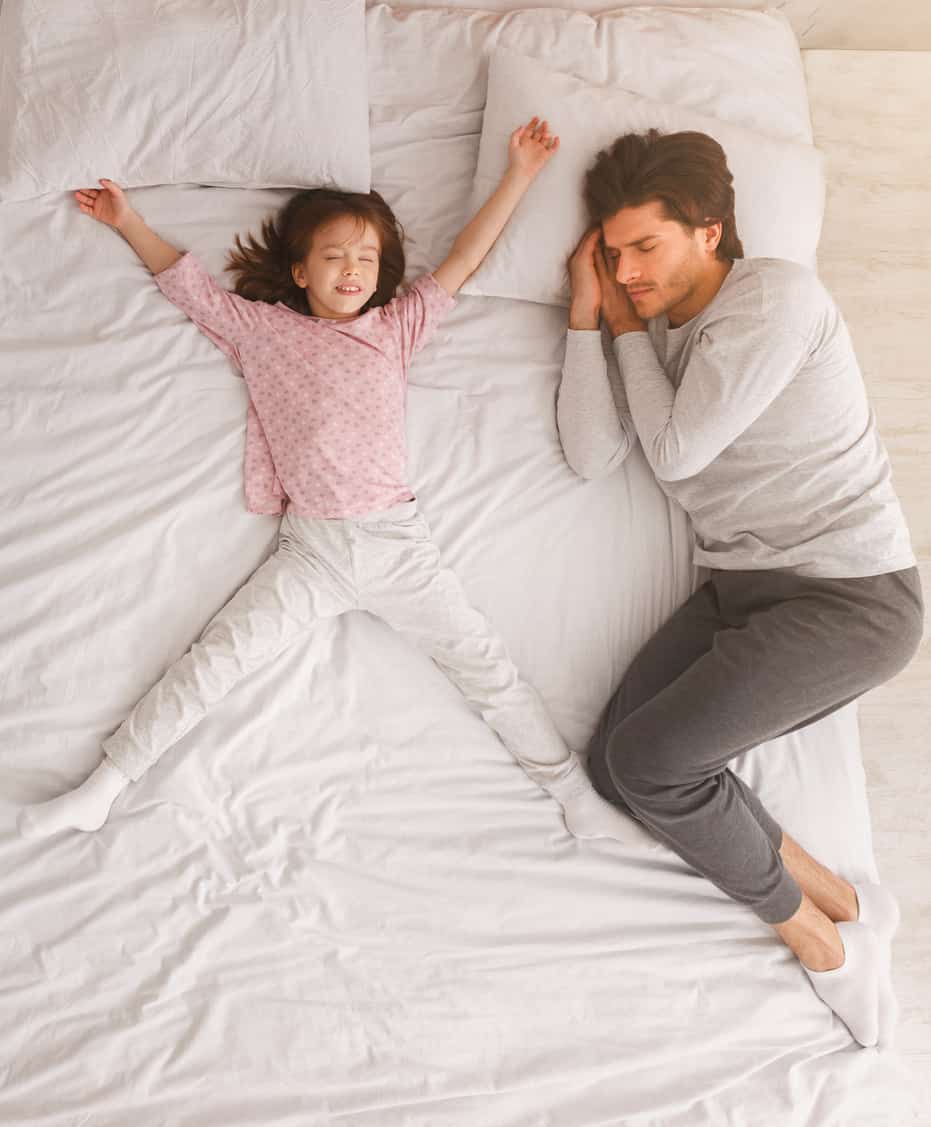You’re fast asleep, dreaming pleasant dreams of a solid night’s rest. You begin to roll over and wake up when realize that someone is laying next to you, hogging up your space. A foot is just inches from your nose and there’s an elbow in your back. It’s happened again. Your child has woken up, climbed out of their bed and into yours. While of course it’s sweet that they love to cuddle, it’s also disrupting your much needed rest.
While it’s helpful to keep your newborn or infant in your room, in a bassinet or side car crib – never in bed with you – you may be flummoxed as to when your baby should be transitioned to their own room. Child sleeping experts recommend that children should be moved to their own rooms at no later than two years old if your home allows. Here at Alzein Pediatrics, we know that the longer you wait, the harder it will be for your little one to self-soothe and put themselves to sleep.
Keep in mind that whether you put your infant in their own room immediately or your child slept in your room since the day they were born, past sleeping arrangements have nothing to do with nighttime wanderings. Putting a child to sleep in their own bed is easy –keeping them in their own bed is often not so easy.
First, let’s go over the most common possible reasons your child wants to climb into your bed:
- Change in bed – When you’ve recently transitioned your child out of the crib and into a “big kid” bed
- Fear – They are scared of the dark or afraid of being alone
- Fear of Missing Out – your child may hear a television or a conversation and wants to be a part of the action
- Toilet training – they may have to get up to go to the bathroom
Many a parent has struggled with this but take some solace in these two hard and fast truths:
- This is temporary. Sooner or later they do stay in their own beds
- Having an established bedtime routine always minimizes these challenges
Not surprisingly, experts differ on the best way to attack this issue. If your child is still in a crib and crawling out, some experts say to put them into a big kid bed to minimize the risks of falling when they do climb out. Some recommend making it more difficult to leave the crib, such as turning the crib so the higher side is at the front and not against the wall. If your child is in a big bed, some experts recommend walking them back to bed and tucking them back in, while others suggest sending them back on their own while you stay in bed. Make the choice that works best for you and your little one.
Here are some methods that keep your wanderer in their own bed:
- Establish a consistent bedtime. For example, your child is in bed by themselves at 7:30 pm without exception, even on the weekends. While this may be difficult to implement initially, regular bedtime pays huge dividends in the long run.
- If your wanderer has an older sibling, try putting them in the same room. Kids are less likely to be as scared when they are not alone, and your kids could build a life-long positive bond, too.
- Try laying on your child’s floor until your little one is asleep.
- Nothing helps a child fall asleep like hearing a story. So get out Dr Seuss, Sandra Boynton, and Shel Silverstein and watch your child become calmer as you read to them – and do it before every bed time and naptime as possible.
- After your child is asleep, close the bedroom door. It will block most of the sounds of your home. Keeping doors closed, but not locked, is also recommended for fire safety.
If your child continues to creep into your bed or seems inordinately afraid of being alone, talk to your Alzein Pediatrics provider. Click here or call 708-424-7600. There may be deeper issues that need prompt intervention and treatment.


